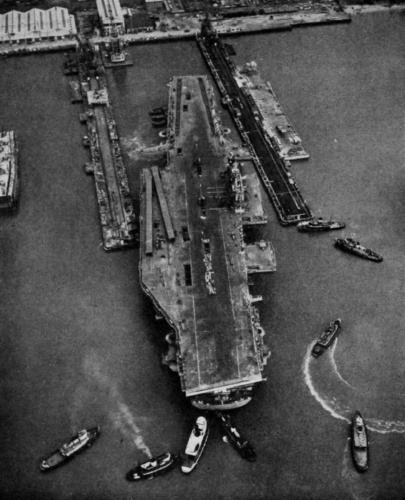
The program to deliver the US Navy’s next generation of aircraft carrier is well underway with the most recent Ford-class carrier – USS John F. Kennedy – ready for final completion and outfitting.
The 10 Ford-class carriers on order will replace USS Enterprise, which was the world’s first nuclear-powered carrier, and Nimitz-class carriers that have been in service since USS Nimitz entered service in 1975.
READ THE ENGINEER'S ORIGINAL COVERAGE HERE
With a ship’s company of between 3000-3,200 and able to embark over 60 aircraft (and 1,500 air wing personnel), the Nimitz-class carriers were designed to have a service life of 50-years with the requirement for a single mid-life refuelling.
The Ford-class will embark over 75 aircraft but will operate with fewer crew members, saving US taxpayers almost $4bn over its 50-year service life.
November 1962 - The birth of Maglev
October 1954 - the flying bedstead
A shared feature of these vessels is the canted – or angled - flight deck and the first to introduce this innovation to the US Navy was USS Forrestal, a surface ship acknowledged as being the world’s first supercarrier that was launched at the yard of Newport News Shipbuilding, Virginia, on December 11th, 1954 and covered by The Engineer the following February.
Our correspondent noted that the 59,900-ton vessel – which had an overall length of 1,036ft and an extreme width across her flight deck of 252ft – would be able to ‘accommodate the fast new jet fighter and light bomber aircraft, some of which will be capable of delivering atomic bombs to any part of the world.’
The canted flight deck – which had been evaluated aboard the carrier USS Antietam – covered nearly four acres, enabling aircraft to land at a slightly oblique angle to the fore and aft centre line of the ship.
“Thus, a pilot who has made a bad approach can “gun” his aircraft for another try without endangering aircraft and personnel on the forward flight deck,” noted The Engineer’s American Section editor.
The canted deck arrangement also provided the advantage of handling take-off and landing operations simultaneously.
“This cant or angle on the flight deck is one of the reasons for the extreme width of the present vessel,” our correspondent noted. “The other advantage is that on the starboard side of the ship outboard of the island aircraft can be brought up from below without interfering with operations on the centre line of the deck.
“From the air the Forrestal does not appear to be a large ship because of the fact that her length of 1036ft is only slightly more than four times that of her extreme width of 252ft. Her island, which is the height of a ten-storey building, is almost lost on her enormous flight deck.”
Another innovative design feature on board the Forrestal was that the flight deck acted as the ‘strength deck’.
“Normally, the flight deck is built with expansion joints so that it is not a part of the ship’s overall strength girder,” The Engineer said. “By contrast, the flight deck on the Forrestal is a continuous fore-and-aft strength deck. The deck is 1¾ in steel plate, which will have no difficulty in withstanding the heat of jet blasts.”
New features on the Ford-class carriers will be an electromagnetic aircraft launch system and advanced arresting gear that will help contribute to a 33 per cent increase in sortie generation compared to the Nimitz-class.
Similarly, four steam catapults allowed Forrestal to launch aircraft faster than any other American carrier afloat and ‘her heavy-duty hydraulic arresters will stop one of to-day’s 70,000 lb jet aircraft within 150ft after it hits the deck at a speed of 100mph.’
“The steam catapults employed were commissioned at the US Naval Air Material Centre in Philadelphia in December, 1953, and are similar to those originally developed by the Royal Navy,” said The Engineer. “With an increased launching power estimated at between five and six times greater than current hydraulic models, these new catapults can launch high-performance jet aircraft even when a carrier is headed down wind or is in a dead calm. Operating steam for the catapults is provided by the conventional ship’s boilers which eliminates the necessity for special petrol, oil, powder or compressed air
facilities.”




Project to investigate hybrid approach to titanium manufacturing
What is this a hybrid of? Superplastic forming tends to be performed slowly as otherwise the behaviour is the hot creep that typifies hot...